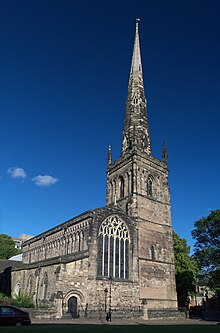
Manchester Cathedral, formally the Cathedral and Collegiate Church of St Mary, St Denys and St George, in Manchester, England, is the mother church of the Anglican Diocese of Manchester, seat of the Bishop of Manchester and the city's parish church. It is on Victoria Street in Manchester city centre and is a grade I listed building.

The Collegiate Church of the Holy and Undivided Trinity, Stratford-upon-Avon, is a Grade I listed parish church of the Church of England in Stratford-upon-Avon, Warwickshire, England. It is often known simply as Holy Trinity Church or as Shakespeare's Church, due to its fame as the place of baptism, marriage and burial of William Shakespeare. More than 200,000 tourists visit the church each year.
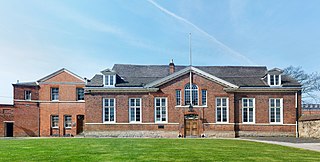
Leicester Castle is in the city of the same name in the English county of Leicestershire. The complex is situated in the west of Leicester City Centre, between Saint Nicholas Circle to the north and De Montfort University to the south. A large motte and the Great Hall are the two substantial remains of what was once a large defensive structure. The hall is now encased in a Queen Anne style frontage. The Castle and the Magazine Gateway is a scheduled monument.

St Mary's, Harrow on the Hill, is the Borough and Parish Church at Harrow on the Hill in northwest London, England. It is a Grade I-listed building.

The Collegiate Church of St Mary is a Church of England parish church in Warwick, Warwickshire, England. It is in the centre of the town just east of the market place. It is Grade I listed, and a member of the Major Churches Network.

St Nicholas Church is a Church of England parish church in Kenilworth, Warwickshire, England.
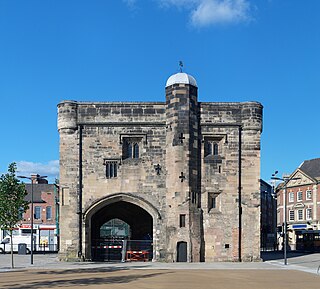
The Magazine Gateway is a Grade I listed building in Leicester. Now a solitary landmark alongside Leicester ringroad, it was originally the main gateway of a walled enclosure built around 1400, giving access to the religious precinct of The Newarke. The vaulted archway was open to traffic until 1905. The gatehouse rooms were variously used as a porter's lodge, guest accommodation, prison, militia building, and regimental museum. It is now a building managed by the Leicester Museum Service, and is generally only open to the public by arrangement.
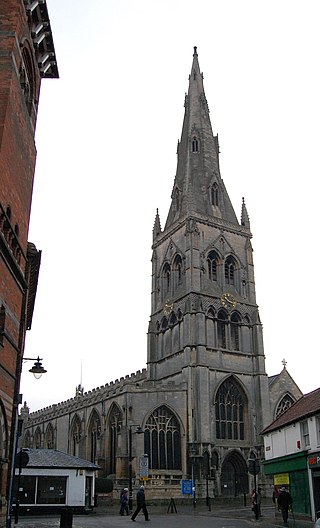
St Mary Magdalene Church, Newark-on-Trent is the parish church of Newark-on-Trent in Nottinghamshire, England. It is dedicated to Mary Magdalene and is the tallest structure in the town.

St. Michael the Archangel Church is the oldest building still in use in the city of Southampton, England, founded in 1070. It is the only church still active of the five originally in the medieval walled town. The church is a Grade I Listed building.
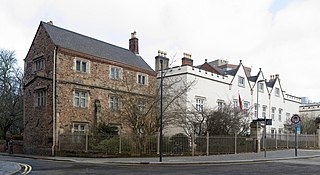
The Newarke Houses Museum is a public museum in Leicester, England. It incorporates the museum of the Royal Leicestershire Regiment, and has a range of exhibits illustrating post-medieval and contemporary Leicester. The museum is close to the 15th century Magazine Gateway and within the precincts of the medieval 'Newarke', the 'New Work' of Henry of Grosmont, 1st Duke of Lancaster. The museum stands in the middle of the De Montfort University campus.

St Mary's Church is a redundant Anglican church in St Mary's Place, Shrewsbury, Shropshire, England. It is recorded in the National Heritage List for England as a designated Grade I listed building, and is under the care of the Churches Conservation Trust, the Trust designated St Mary's as its first Conservation Church in 2015. It is the largest church in Shrewsbury. Clifton-Taylor includes the church in his list of 'best' English parish churches.

St Mary the Virgin's Church is in the village of Bottesford, Leicestershire, England. It is an active Anglican parish church in the deanery of Framland, the archdeaconry of Leicester and the diocese of Leicester. Its benefice is united with those of eight local parishes. The church is recorded in the National Heritage List for England as a designated Grade I listed building.
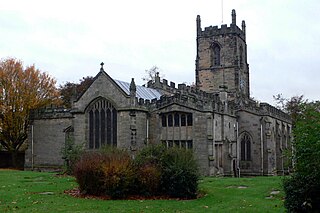
St Helen's Church is the Anglican parish church of Ashby-de-la-Zouch, in the deanery of North West Leicestershire and the Diocese of Leicester. There was a church in the town in the 11th century, but the core of the present building mainly dates from work started in 1474, when the church was rebuilt by William Hastings at the same time that he converted his neighbouring manor house into a castle. The church was refurbished in about 1670 to create more space, but the large and increasing size of the congregation led to further work in 1829, and a major rebuild in 1878–80, including the widening of the nave by the addition of two outer aisles.

St. Peter's Church, Lowick, is the Church of England parish church of Lowick, Northamptonshire, England.

The Church of St Peter and St Paul, Uppingham is the Church of England parish church of Uppingham, Rutland. It is part of the Diocese of Peterborough.
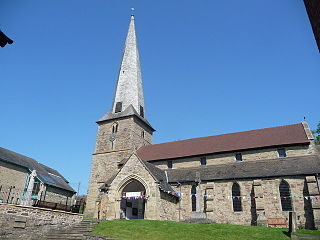
St Mary's Church is on Church Street, Cleobury Mortimer, Shropshire, England. It is an active Anglican parish church in the deanery of Ludlow, the archdeaconry of Ludlow, and the diocese of Hereford. Its benefice is united with those of six local parishes to form the Cleobury Benefice. The church is recorded in the National Heritage List for England as a designated Grade I listed building. It is notable for its shingled twisted spire.
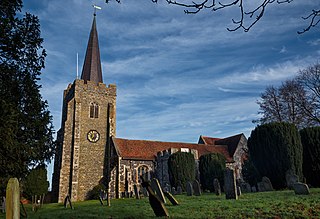
St Mary's Church, Wingham, is an Anglican parish church in Wingham, Kent. It is recorded in the National Heritage List for England as a designated Grade I listed building.

St Mary's Church, Ilkeston is a Grade II* listed parish church in the Church of England in Ilkeston, Derbyshire. Built in the 14th century, it is known as the "Mollis Chapel" because of a stained glass window which shows the rising sun above the cross which was fixed to it by the local saint.

The Church of the Annunciation of Our Lady of the Newarke in Leicester, was a collegiate church founded by Henry of Grosmont, 1st Duke of Lancaster, in 1353. The name "Newarke" is a translation of the Latin "novum opus" i.e. "new work" and was used to distinguish the church from the older collegiate church of Leicester Castle, the Church of St Mary de Castro. Duke Henry enlarged his father's hospital foundation in the southern extension to the castle bailey and built the new church to house a holy relic, part of the Crown of Thorns given him by John II of France. The church became a place of pilgrimage. Leland visited it around 1540, shortly before its destruction during the Suppression of the Chantries. He described the church as "not very great...but exceeding fair."
